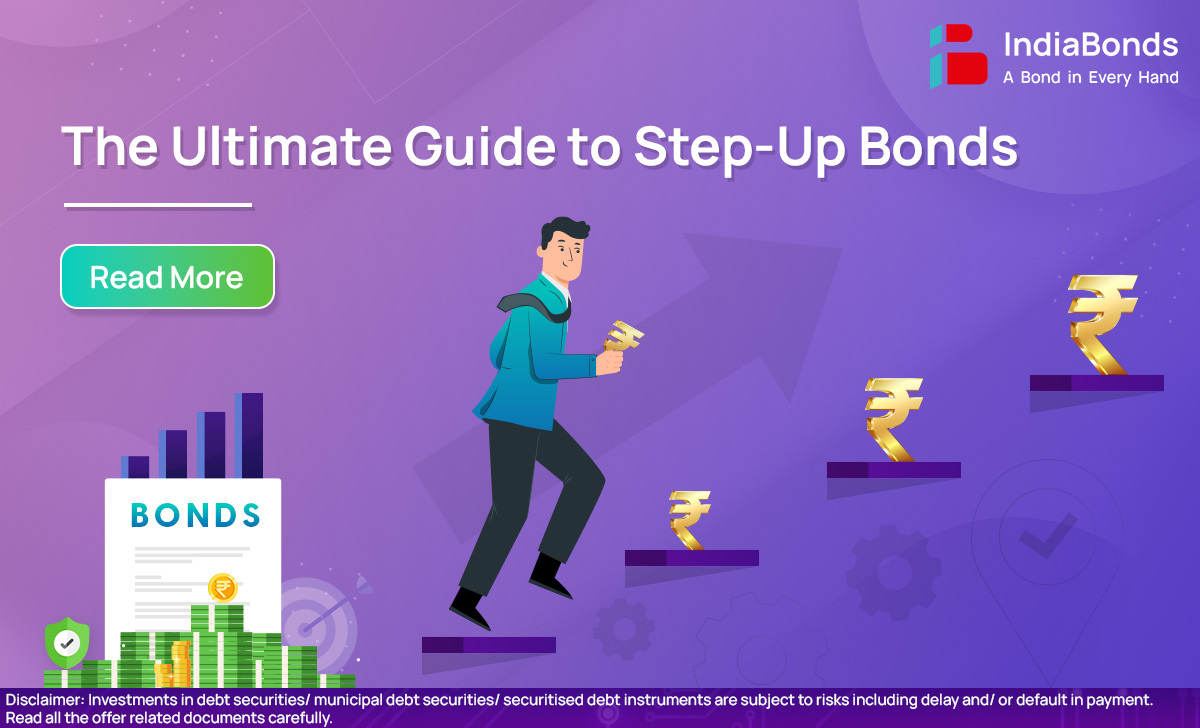
It is the new year, you decide to get fit and lose the holiday weight you gained. On January 1st, you start going to the gym with determination. You begin with a 5kg biceps curl and feel a bit sore afterward. The next week, you continue to stick to your resolution and return to the gym. Surprisingly, the 5kg weight feels lighter to you, so you increase it to 7.5kg. With consistent effort, proper diet, and enough rest, you notice a significant increase in strength after two to three weeks, making a 10kg biceps curl seem easy.
For a fitness enthusiast, gradually improving strength is one of the key goals. Similarly, imagine if you had a financial instrument that consistently provides higher income periodically, all while safeguarding your capital.
Welcome to the world of step-up bonds!
Step-up Bonds is a unique fixed-income instrument that adds an exciting twist to the traditional fixed-income securities. In this comprehensive guide to step-up bonds, we’ll explore into what makes these bonds stand out, how they work and why they might be a valuable addition to your portfolio.
For those unfamiliar, bonds represent fixed-income instruments that are simply loans. For instance, when one purchases a bond from a corporation or government entity, they essentially lend a specified amount, known as the principal, to that entity for a set duration of years. In exchange, the entity commits to making interest payments, referred to as ‘coupon payments,’ on the borrowed sum until the loan’s maturity, at which point the principal is returned to the lender.
This is a classic example of a fixed rate bond where the coupons are fixed. Unlike conventional fixed-rate bonds, where interest remains consistent over the bond’s duration, step-up bonds present investors with the prospect of enhanced returns. In this type of bond, the interest rate or coupon ‘steps up’ or increases at predetermined intervals. Consequently, the coupon income in a step-up bond rises from one period to the next, leading to a progressive increase in interest income for bondholders over time.
Understanding step-up bonds is essential for investors who aim to integrate them into their portfolios. These bonds initially offer lower coupons in the early years, gradually increasing to higher coupons in later periods. The initial interest rate set at the bond’s issuance serves as a benchmark for investors to evaluate the bond’s appeal.
Since the offered interest rates are low, with subsequent increases expected in the following periods, if one anticipates a future decrease in interest rates in the economy, investing in these bonds could prove advantageous. Simultaneously, these bonds can also be beneficial when considering inflation.
The issuers of these bonds are generally in the growth phase or startup stage of their business. Consequently, they anticipate their cash flows to expand significantly over time, preferring to manage lower cash flows initially. Likewise, investors are motivated to earn more in the future, making it a mutually beneficial situation. Typically, these bonds come with a callable feature, offering issuers protection in the event of rising interest rates.
Assume a company issues a 5-year step-up bond with a face value of ₹10,000 and an initial interest rate of 6%. The interest rate will increase by 1% every year for the next 4 years.
So, the interest payment schedule for the bond might look like this:
Year 1: 6% interest rate, ₹600 interest payment (₹10,000 * 0.06)
Year 2: 7% interest rate, ₹700 interest payment (₹10,000 * 0.07)
Year 3: 8% interest rate, ₹800 interest payment (₹10,000 * 0.08)
Year 4: 9% interest rate, ₹900 interest payment (₹10,000 * 0.09)
Year 5: 9% interest rate (since it doesn’t step up anymore), ₹900 interest payment (₹10,000 * 0.09)
This structure still incentivizes investors to hold onto the bond since the interest payments increase over time, potentially providing higher returns compared to traditional fixed-rate bonds.




In the world of fixed income securities offering fixed and stable returns, step-up bonds bring an element of adaptability. Investors can benefit from potential increased yields over time, making these bonds an intriguing option. As with any investment, it’s essential to carefully consider your risk tolerance, investment goals and market conditions before venturing into step-up bonds. Their unique structure can add diversity and resilience to your portfolio, but thorough research is paramount. To summarize, what you need to know about step up bonds is that these bonds offer investors a unique opportunity to navigate changing market conditions while potentially enhancing returns. By understanding the mechanics and carefully considering your investment strategy, you can make informed decisions about whether step-up bonds are the right fit for your portfolio.
It’s now time to ‘step-up’ your bond investing with IndiaBonds.
A: Step-up bonds definition can be termed as ‘a debt security with a built-in feature that allows the coupon rate to rise at predefined intervals’
A: While step-up bonds offer the potential for increased returns, they may not be ideal for extremely conservative investors. The variable interest rate and the element of callability introduce an element of uncertainty and individuals pursing consistent and predictable income might prefer traditional fixed-rate bonds.
A: Step-down bonds serve a function similar to step-up bonds, albeit in reverse. In this case, the coupons are higher in the initial period, followed by a lower coupon in the subsequent period. Investors seeking immediate high yield might find this option appealing, especially when compared to traditional fixed-rate bonds in a low-interest-rate environment.
Disclaimer: Investments in debt securities/ municipal debt securities/ securitised debt instruments are subject to risks including delay and/ or default in payment. Read all the offer related documents carefully.